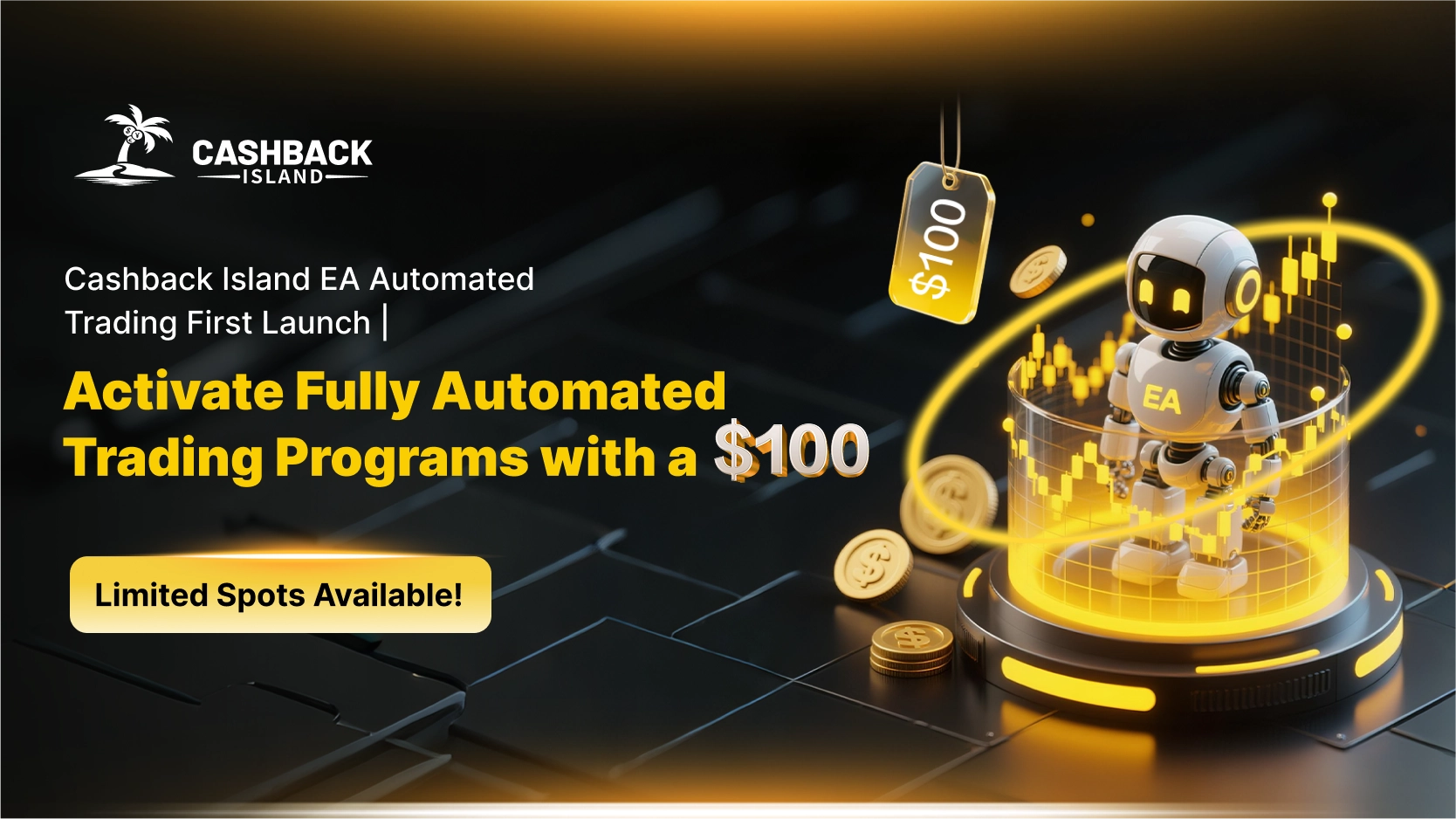Forex IB Agent Explained: Rebate System & Passive Income

What Is an IB Agent? Complete Analysis of the Forex IB Rebate Model: Understand How to Earn Passive Income in One Read
Want to build a stable and steadily growing source of passive income in the forex market without having to trade yourself? You may often hear the term “IB agent”, yet feel confused about how this role works, how to earn from it, and how to get started. So, what exactly is an IB agent? How is it different from the typical sales or affiliate marketing models we know? This article provides the most comprehensive introduction to forex IBs, offering an in-depth analysis of the core IB agent rebate models and a simple five-step beginner’s guide to help you fully understand this high-potential business opportunity, turning your network and expertise into real profit.
What Exactly Is an IB Agent? Instantly Understand the Role of an Introducing Broker
The full term “IB agent” stands for “Introducing Broker”. At first glance, many may think it’s merely a “referrer” or “middleman”, but in reality, the IB agent plays a far more important and multifaceted role within the forex market ecosystem.
Official Definition of an IB Agent: The Vital Bridge Between Traders and Brokers
In simple terms, an IB agent is an independent individual or company whose main role is to introduce new trading clients to forex brokers. In return, brokers pay the IB a certain percentage of commission or rebate based on the trading activity generated by those clients. Thus, an IB agent serves as a crucial bridge, connecting investors who seek quality trading services with brokers aiming to expand their market share, creating a win-win-win situation:
- For traders: They can access more detailed platform information, dedicated customer support, and sometimes even more favorable trading conditions through a professional IB agent.
- For brokers: IB agents serve as a highly cost-effective marketing channel, helping brokers reach a broader potential client base and reduce marketing expenses.
- For IB agents: This is a business that allows them to convert their professional knowledge, trading experience, or community influence into a sustainable source of income.
Main Responsibilities of an IB Agent: More Than Just Introducing Clients, but Also Providing Service and Support
A successful IB agent doesn’t simply “hand clients over” to brokers and call it a day. Their responsibilities focus on both client onboarding and ongoing service support. These typically include:
- Market education and information sharing: Explaining to potential clients the basic concepts of forex trading and market risks, while introducing the features and advantages of the partner brokers’ platforms.
- Account opening assistance: Guiding clients through the often complex account opening process, ensuring accurate form completion, and answering any questions that arise along the way.
- Client relationship management: Acting as the first line of communication between clients and brokers, helping resolve issues related to deposits, withdrawals, or trading platform operations.
- Providing added value: Many top-tier IB agents offer extra services such as market analysis, trading strategy sharing, online courses, or the creation of exclusive trading communities, strengthening client loyalty in the process.
Why Do IB Agents Play an Indispensable Role in the Forex Market?
The forex market is global, operates 24 hours a day, and is highly competitive. For brokers, establishing physical offices and conducting localized marketing around the world is extremely costly. The IB agent system perfectly solves this challenge. IB agents are typically well-established within specific regions or communities, they understand local culture and investor needs, and can promote and serve clients in the most “localized, relatable way”. This “grassroots network” forms the capillary structure of a broker’s global presence, offering flexibility and reach that traditional marketing models can hardly match.
Unveiling the Core of Forex IB Agents: The 3 Main Rebate Models
Understanding how IB agents earn money is key to evaluating the potential of this business. Different brokers offer various IB rebate models, but they mainly revolve around three core types. Knowing how each model works and what sets them apart will help you choose the partnership structure that best suits your promotional strategy.
| Rebate Model | Income Characteristics |
Calculation Method |
Ideal For |
| Spread Rebate | High continuity and stability | Rebated based on a fixed percentage of the client’s trading spread | IBs seeking long-term and stable cash flow |
| Commission per Lot | Direct and highly transparent | Fixed commission paid according to the number of lots traded by the client | IBs with high client trading volumes |
| CPA (Cost Per Acquisition) | One-time, high-value | Paid after the client completes the first deposit and meets the minimum trading requirements | IBs skilled in online marketing and traffic monetization |
Model 1: Spread Rebate — The Most Common Form of Recurring Income
This is the classic and most widely used IB rebate model. When your clients trade, a “spread” is generated, the difference between the bid and ask prices, which is one of the broker’s main sources of revenue. Under the spread rebate model, the broker returns a portion of this spread to you based on an agreed percentage.
- Example: Suppose the broker you partner with offers a 40% spread rebate. Your client trades 1 standard lot of EUR/USD, with a spread of 1.5 pips valued at USD 15. Your commission would therefore be: USD 15 × 40% = USD 6.
- Advantages: As long as clients keep trading, you continue to earn an ongoing income, this is the essence of passive income. The longer your clients remain active, the greater your total earnings become.
- Disadvantages: Income growth is slower in the early stages, as you need to accumulate a sufficient number of active clients before seeing significant returns.
Model 2: Commission per Lot — Direct Returns Based on Trading Volume
This model is very straightforward, your income is directly tied to your clients’ trading volume. The broker pays you a fixed amount of commission for every standard lot traded by clients under your account.
- Example: The broker offers a commission of USD 8 per lot. If your clients trade a total of 50 standard lots in a month, your total commission would be: USD 8 per lot × 50 lots = USD 400.
- Advantages: Income calculation is simple and transparent, making it easy to track and forecast. For IBs who can attract high-frequency traders or large-volume clients, this model has strong growth potential.
- Disadvantages: Income can be more volatile, as it fully depends on clients’ trading activity for the month. If market conditions are quiet and clients trade less, your income will decrease accordingly.
Model 3: CPA (Cost Per Acquisition) — A One-Time High-Reward Model
The CPA model, or “Cost Per Acquisition”, is a one-time reward system. When a client you refer meets the specified requirements (usually by making an initial deposit above a certain threshold and completing a set number of trades) the broker pays you a lump-sum bonus. After that, any future trading activity from that client is no longer linked to your income.
- Example: The broker offers a CPA reward of USD 300 per qualified client. If you successfully refer 5 clients in a month and all of them meet the qualification criteria, your income would be: USD 300 × 5 clients = USD 1,500.
- Advantages: Fast returns with highly attractive bonus amounts. This model is ideal for digital advertisers, content marketers, or SEO specialists who excel at online marketing and can quickly monetize traffic.
- Disadvantages: No continuity. You must constantly acquire new clients to maintain income, it cannot offer the same “set it and forget it” advantage as the first two models.
How to Become a Successful Forex IB Agent? A 5-Step Beginner’s Guide
After understanding how IB agents earn income, you might already be eager to get started. However, becoming a successful IB agent is not as simple as just registering an account. The following five steps apply to both beginners and experienced professionals, helping you avoid detours and build a strong foundation.
Step 1: Choose a reputable and well-regulated forex trading platform
This is the most important and fundamental step in becoming an IB agent. Your credibility is closely tied to the platform you represent. If you choose an unregulated or poorly reviewed broker, it can harm your personal brand and expose your clients to potential fund security risks. When selecting a platform, make sure to consider the following factors:
- Regulation: Does the broker hold licenses from top-tier financial regulators such as the UK’s FCA, Australia’s ASIC, or Cyprus’s CySEC? These authorities impose strict requirements on fund safety and operational standards.
- Market reputation: Check reviews on major financial forums and social media to learn about real user experiences, including transaction quality, deposit and withdrawal speed, and customer service.
- Trading conditions: Evaluate whether the platform’s spreads, leverage, product range, and server stability are competitive in the market.
Step 2: Gain a thorough understanding and compare different platforms’ IB rebate models and conditions
After narrowing down a few reputable platforms, the next step is to carefully review their IB partnership programs. Don’t just focus on the surface-level commission rates, pay close attention to the detailed terms and conditions:
- Commission structure: Does the platform offer a spread rebate, per-lot commission, CPA model, or a hybrid plan? Which one best fits your promotional strategy?
- Payment cycle: Are commissions settled daily, weekly, or monthly? Timely payouts help ensure smoother cash flow for your business.
- Dashboard system: Does the platform provide a transparent and well-equipped IB dashboard? You should be able to clearly track each client’s trading activity and your commission details.
- Support policies: Does the platform offer marketing materials, market analysis reports, or a dedicated account manager to support IB agents?
Step 3: Build your personal brand or community to attract potential clients
In today’s “everyone is a media outlet” era, IB agents are no longer limited to offline sales. Establishing your online influence is essential. You can start by focusing on the area you’re best at:
- Content creation: If you’re skilled at analysis, launch a blog, YouTube channel, or social media page where you regularly share valuable content such as market analysis, trading strategies, or technical indicator tutorials.
- Community building: Create a LINE group, Telegram channel, or Facebook community to gather like-minded individuals interested in trading, and build trust through daily interaction.
- Offline events: Host small investment sharing sessions or reading groups to connect with potential clients face-to-face and establish stronger relationships.
Step 4: Provide value by educating and assisting clients with trading issues
Attracting clients is just the beginning, retaining them is the key to long-term profitability. You should position yourself as a “consultant” rather than a “salesperson”. When clients encounter problems, whether related to platform operation, trading rules, or market confusion, you should proactively offer assistance. The more value you provide, the higher the client loyalty, and the longer your IB business will thrive.
Step 5: Use the backend system to track performance and optimize your promotional strategy
Log in to your IB dashboard regularly to analyze data reports. Which promotional channels bring in the most clients? What type of clients trade the most actively? These insights help you understand your client profile and adjust your content direction and marketing strategy accordingly. For example, if you find that clients acquired through YouTube tutorial videos generate the highest trading volume, you should invest more resources into producing higher-quality video content. Continuous data analysis and optimization are the keys to scaling up your income.
Frequently Asked Questions (FAQ)
What is the difference between an IB agent and an affiliate marketer?
The two are very similar, but in the financial industry, there are subtle distinctions. Generally, affiliate marketing is more of a one-time referral model, similar to the CPA structure mentioned earlier. Affiliates mainly focus on generating clicks and registrations, with little ongoing interaction with clients. An IB agent, on the other hand, emphasizes building long-term relationships, providing continuous service and support, and earning income that is often tied to clients’ ongoing trading activity (such as spread or per-lot rebates). In this sense, the IB acts more like an “external business partner” of the broker.
Do I need professional trading qualifications to become an IB agent?
In most cases, becoming an IB agent does not require a professional financial license or trading qualification. Brokers primarily value your ability to attract and support clients. Of course, if you are already an experienced trader with solid financial knowledge, that will be a major advantage in building client trust. However, even if you are new to trading, you still have the potential to succeed as an IB agent as long as you excel in community management or content marketing.
Will clients pay higher trading costs when opening an account through an IB agent?
This is a very common misconception. For reputable and well-established brokers, the answer is no. Whether a client opens an account directly on the broker’s official website or through an IB agent, the trading costs, such as spreads and commissions, remain exactly the same. The IB’s commission is paid by the broker out of its own marketing budget, not added on top of the client’s costs. In fact, by opening an account through an IB agent, clients can often enjoy additional services and support without any increase in trading expenses.
Is an IB agent’s income stable?
The income potential for IB agents is high, but stability depends on several factors. In the early stages, when the number of clients is still small, income may fluctuate with market activity. However, once you have built a solid base of active trading clients, the variation tends to balance out, (since different clients trade at different frequencies) resulting in a more stable and reliable cash flow. The key to long-term success lies in continuously attracting new clients while maintaining strong relationships with existing ones.
Conclusion
In summary, the forex IB agent model is an exceptionally attractive business opportunity that breaks down traditional barriers in the financial industry, allowing anyone with professional knowledge, community influence, or marketing skills to turn these intangible assets into sustainable passive income. The key to success lies in thoroughly understanding the different IB rebate models and choosing from the start a platform that offers fund security, transparency, reliability, and strong support policies for long-term collaboration. We hope this comprehensive introduction to forex IBs has unveiled the mystery behind Introducing Brokers and helps you take your first step toward success, start planning your IB business today!
Related Articles
-
Which Exchange Is Best for Beginners? 2025 Beginner’s Guide and Exchange Recommendations Just stepped into the new world of cryptocurrency but already overwhelmed by the countless exchanges out there? When faced with the big question, “Which exchange is best for beginners?”, many people simply don’t know where to start. In...2025 年 11 月 17 日
-
Exchange Fund Transfer Procedure: Illustrated Guide to Deposits, Withdrawals, and Wallet Transfers New to the world of cryptocurrency but overwhelmed by the complicated fund operations? You often hear terms like “deposit”, “withdrawal”, and “fund transfer”, yet when it comes to actual operation, you worry that pressing the wrong button might...2025 年 11 月 17 日
-
Exchange API Application and Integration Tutorial: Understand API Trading Settings in One Article! Tired of watching the market all day and placing orders manually, only to miss the best entry and exit points? Want to implement 24/7 automated trading strategies through programming but don’t know where to start? This article...2025 年 11 月 17 日












